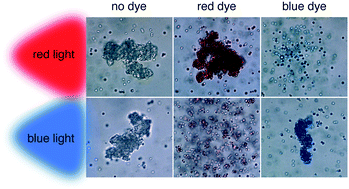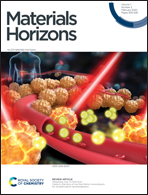Modulating and addressing interactions in polymer colloids using light†
Abstract
DNA-mediated linkages between colloidal particles enable controlled assembly and, by virtue of the sharp thermal binding–unbinding transition, provide a mechanism to create switchable structures. However, bulk thermal heating limits switching times to tens of seconds or more. We show that the timescale can be reduced to milliseconds by using light to dynamically control interactions among DNA-coated colloidal particles. We dye particles, such that when they are uniformly illuminated with unfocused light with a wavelength in the absorption band of the dye, they locally heat. We show that the interactions can be reversibly switched by modulating the light intensity. By using multiple dyes and different wavelengths of light, we independently address interactions between different sets of particles. Calculations show that light-driven heating produces local temperature gradients around the constituent particles that build up and dissipate on timescales of milliseconds, and experiments show that particle interactions can be modulated on timescales of 50 ms or less. This light-driven control is straightforward to implement in existing DNA-coated colloidal systems and opens the door to sequential and non-equilibrium assembly schemes.



 Please wait while we load your content...
Please wait while we load your content...
